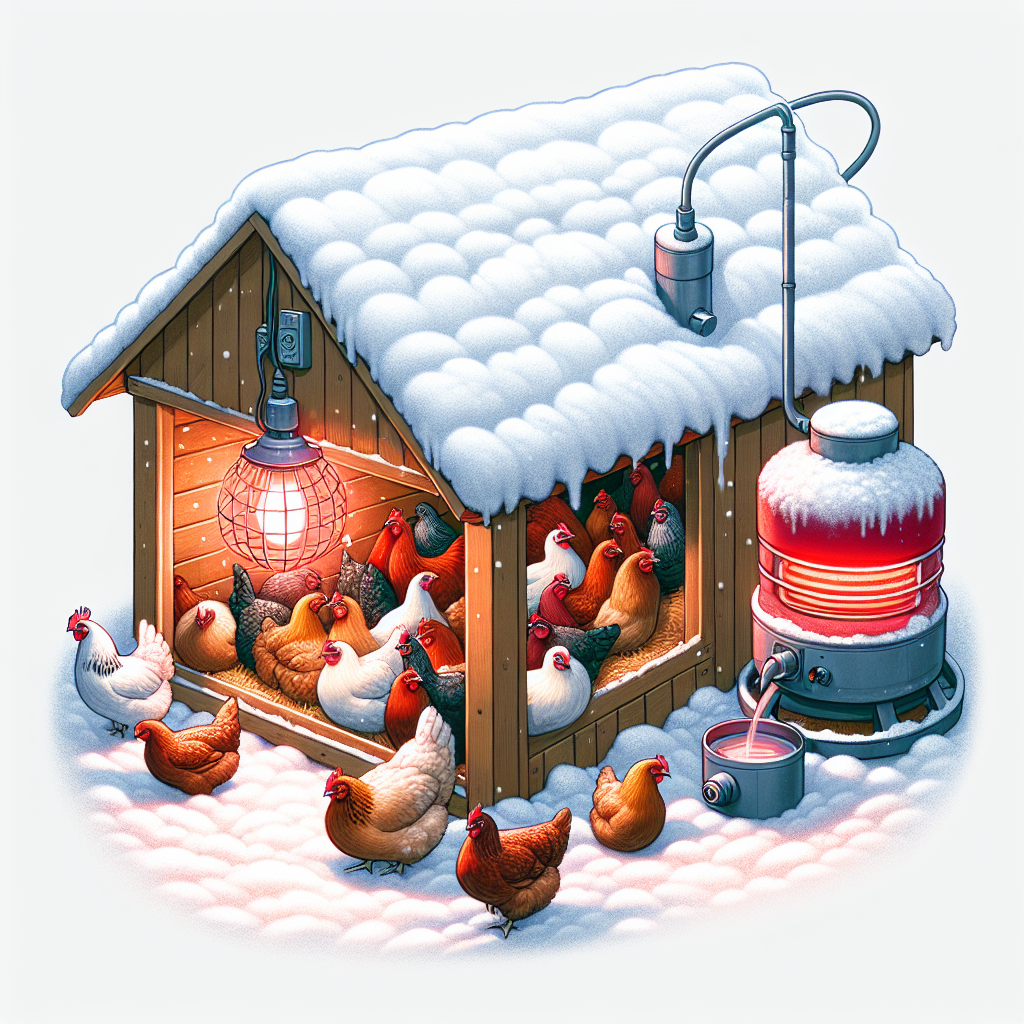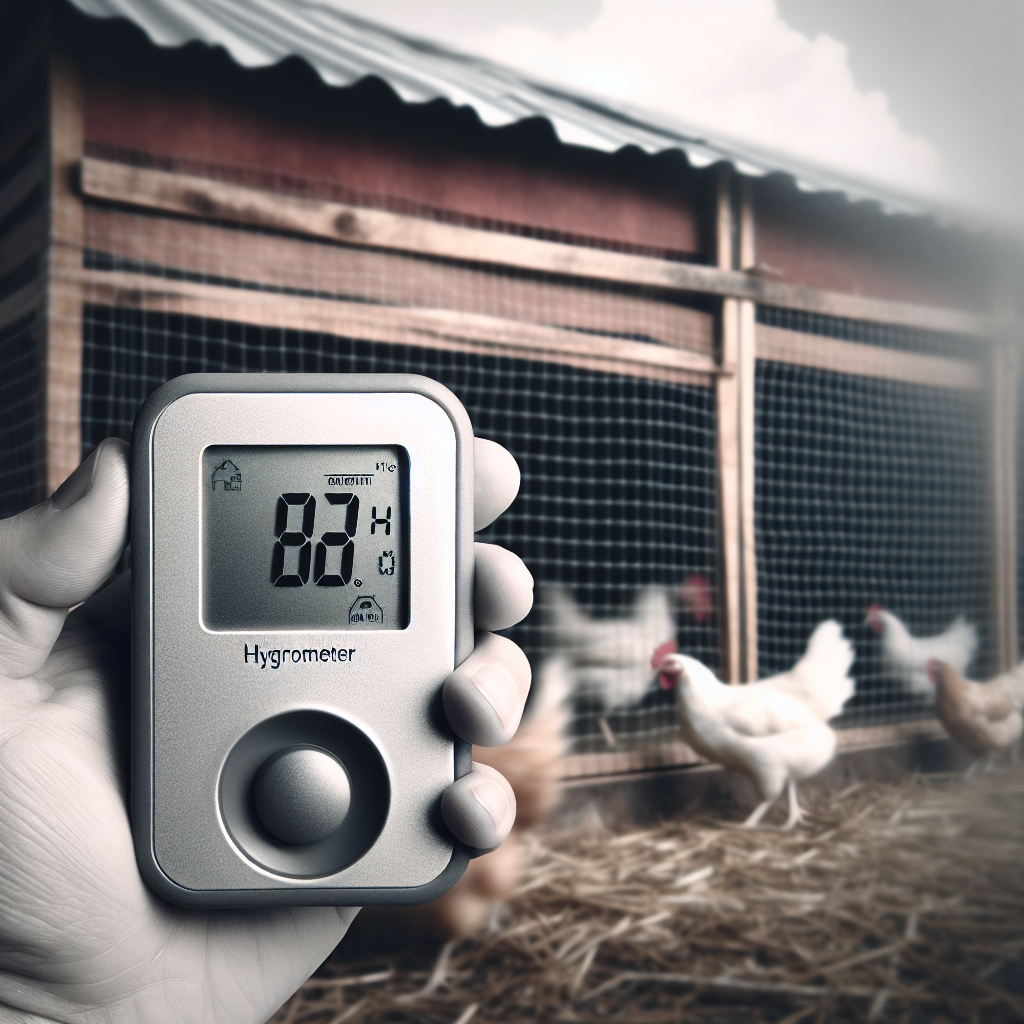If you’re a chicken owner, the question of whether chickens can go out in the snow and how to manage it is something that may be on your mind. Well, good news – chickens can indeed go out in the snow, but there are a few precautions you need to take to ensure their safety and well-being. In this article, we’ll explore the do’s and don’ts of allowing your feathered friends to venture into the winter wonderland, providing you with helpful tips on how to manage this snowy adventure. So, let’s get started and make sure your chickens have a clucking good time in the snow!
Choosing the Right Chicken Breeds for Snow
When it comes to keeping chickens in snowy conditions, it’s important to choose breeds that are cold-hardy and can tolerate the cold temperatures. Some popular cold-hardy breeds include the Rhode Island Red, Plymouth Rock, Wyandotte, and Orpington. These breeds have thick feathers and strong immune systems, which help them withstand the harsh winter weather.
Another consideration when choosing chicken breeds for snow is their comb type. Chickens with large, floppy combs are more prone to frostbite since their combs are more exposed to the cold. Breeds with smaller combs, such as the pea comb or rose comb, are better suited for snowy climates as they are less likely to experience frostbite.
Feather quality is also an important factor to consider when selecting chicken breeds for snowy conditions. Chickens with dense plumage and good feather coverage are better equipped to stay warm and protected from the cold. Look for breeds with fluffy feathering around their necks and bodies to ensure they have adequate insulation in colder temperatures.
Preparing the Coop for Winter
Before the winter season begins, it’s crucial to prepare the chicken coop to provide a comfortable and safe environment for the chickens. Insulating the coop is essential to retain heat and keep the birds warm. Use materials such as foam boards or straw bales to insulate the walls, floor, and ceiling of the coop.
Proper ventilation is also crucial in winter. Although it may seem counterintuitive, ventilating the coop helps remove moisture and prevent condensation, which can lead to frostbite. Ensure that there are vents or windows that can be opened and closed to regulate airflow.
In addition to insulation and ventilation, it’s essential to ensure the coop remains dry. Moisture can cause health issues for chickens and increase the risk of frostbite. Use bedding materials such as straw or wood shavings that absorb moisture and replace them regularly to maintain a dry environment.
Adding heat sources can also be beneficial, especially during extremely cold temperatures. Consider using safe heat sources like heat lamps or heated pads to provide additional warmth for the chickens. However, be cautious of fire hazards and monitor the temperature to prevent overheating.
Determining If It’s Safe for Chickens to Go Outside
While chickens can handle cold temperatures, it’s important to consider certain factors before allowing them to venture outside in the snow. Temperature limits play a significant role in determining whether it’s safe for chickens to go outside. Generally, chickens can tolerate temperatures as low as 20 degrees Fahrenheit, but individual tolerance may vary depending on the breed.
Wind chill is another crucial factor to consider. Even if the actual temperature is within the safe range, high winds can significantly decrease the effective temperature and pose a risk to the chickens. Consider keeping the chickens inside if there are strong winds or wind gusts.
Additionally, freezing rain or heavy snowfall can create hazardous conditions for chickens. Snow buildup can make it difficult for them to navigate and significantly increase the risk of frostbite. It’s essential to evaluate the severity of the weather conditions and weigh the potential risks before allowing the chickens outside in such conditions.
Managing the Time Outdoors
If it’s safe for the chickens to go outside, there are several steps you can take to ensure their safety and comfort. Shoveling paths in the snow can help the chickens move around more easily and prevent them from getting stuck or trapped in deep snow. Clear any obstacles or hazards from the paths, such as fallen tree branches or sharp objects.
Applying non-toxic ice melt along the paths can also help melt the snow and prevent slippery conditions. It’s important to choose a product specifically labeled as safe for animals to ensure the chickens’ well-being. Avoid using salt or other chemicals that can be harmful to the chickens.
Creating windbreaks around the outdoor space can provide protection from strong winds and help reduce the risk of cold stress. Install barriers such as fences, hay bales, or boards to block the wind and create a more sheltered area for the chickens to roam.
It’s crucial to provide a sheltered area where the chickens can seek refuge from the cold and snow. This can be a simple structure such as a covered coop or a designated area with windbreaks. Ensure that the sheltered space has adequate protection from snow accumulation and provides a dry and warm environment for the chickens.
Adjusting Feeding and Watering Practices
In snowy conditions, chickens require extra nutrition to keep warm and maintain their overall health. Increase their caloric intake by providing more high-quality feed, such as poultry pellets or grains. Consider adding additional protein-rich treats like mealworms or black soldier fly larvae to their diet, as protein helps generate body heat.
Adding vitamins and supplements to their feed can also support their immune system and keep them healthy during winter. Consider adding a poultry-specific vitamin and mineral supplement to their diet to ensure they receive essential nutrients.
Preventing water from freezing is crucial as chickens require constant access to fresh water. Use heated waterers or place a heated element, such as a heated rock or bowl, in the water container to prevent freezing. Regularly check the water source throughout the day to ensure it remains unfrozen and provide warm water if necessary.
Promoting Chicken Health in Snowy Conditions
Regularly checking for frostbite is important during winter. Frostbite primarily affects the comb, wattles, and exposed parts of the chicken’s body. Monitor these areas closely for any signs of discoloration, swelling, or blackened skin. If any signs of frostbite are observed, take immediate action by moving the chicken to a warm and dry environment and consult a veterinarian if necessary.
Preventing pasty butt is another health concern in snowy conditions. Pasty butt occurs when droppings stick to the vent area, blocking it and preventing proper elimination. Keep the vent area clean and dry by regularly inspecting and cleaning it. Provide an absorbent bedding material, such as straw or wood shavings, to help prevent pasting.
Monitor the chickens for any signs of illness or health issues. In cold and snowy conditions, chickens may be more prone to respiratory infections or other ailments. Keep an eye out for symptoms such as coughing, sneezing, lethargy, or reduced appetite. Seek professional veterinary advice if any health issues arise.
Dealing with Snow Build-up
To protect the coop from snow accumulation, regularly clear any snow from the roof to prevent excessive weight and potential structural damage. Use a snow rake or long-handled broom to carefully remove the snow. Ensure that the area where the snow is being cleared is safe and free from obstructions to prevent accidents.
Clearing snow safely around the coop and outdoor areas is important to prevent any risks or difficulties for the chickens. Be cautious of where the removed snow is piled to avoid blocking pathways or creating hazards. Shovel the snow to designated areas away from the chickens’ paths and ensure that the removed snow doesn’t block ventilation or access points.
Ice damming can occur on the roof or eaves of the coop, leading to water leakage and potential damage. Regularly check for ice dams and remove them carefully using safe and appropriate methods. This helps maintain the integrity of the coop and prevent any water-related issues.
Addressing Behavioral Changes in Chickens
During snowy conditions, chickens may exhibit behavioral changes that are normal responses to the cold weather. One common change is reduced egg production. Cold temperatures and the energy required to stay warm can result in a decrease in egg-laying. This is a natural response, and egg production usually resumes once temperatures become milder.
Decreased activity levels are also commonly observed in chickens during snowy conditions. They may spend more time inside the coop, conserving energy and staying warm. Provide plenty of entertainment and enrichment within the coop, such as perches, hanging toys, or fresh bedding, to keep them mentally stimulated.
Snowy conditions may also affect the social dynamics within the chicken flock. Chickens may spend more time huddled together for warmth, and conflicts or pecking orders may change. Monitor the chickens’ interactions closely and ensure they have enough space and resources to minimize any potential conflicts.
Preparing for Power Outages
Power outages can occur during winter storms, leaving chickens without essential heat and lighting. It’s important to have backup heat sources ready in case of emergencies. Consider investing in battery-powered or propane heaters to keep the coop warm during power outages. Make sure to follow safety guidelines and monitor these heat sources closely.
Emergency lighting is also crucial in case of power failures. Battery-powered lanterns or LED lights can provide sufficient illumination during the night or when natural lighting is limited. Keep spare batteries on hand and regularly check that the emergency lighting devices are in working order.
Ensuring a continuous water supply for the chickens during power outages is essential. Consider having backup water containers filled and readily available in case the primary water source becomes unavailable. Insulate these containers to prevent freezing and monitor them regularly to ensure the chickens have access to water.
Monitoring Weather Conditions
Staying informed about weather conditions is vital in managing chickens during snowy conditions. Keep track of weather forecasts and stay updated on any winter storm warnings or advisories in your area. This allows you to make informed decisions about whether it’s safe for the chickens to go outside and implement necessary precautions.
Maintain emergency preparedness by having an emergency kit on hand. Include items such as extra food, water, bedding material, first-aid supplies, and any necessary medications for the chickens. Being prepared for potential emergencies ensures that you can quickly respond and take care of the chickens’ needs during challenging weather conditions.
By following these guidelines and taking the necessary precautions, you can provide a safe and comfortable winter environment for your chickens. Paying attention to their specific needs in snowy conditions helps promote their health, well-being, and overall happiness throughout the winter season. With proper preparation and care, you can successfully manage chickens in the snow and enjoy the unique experience of raising these amazing birds year-round.




